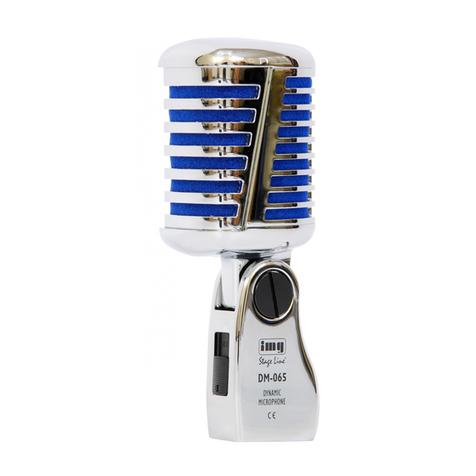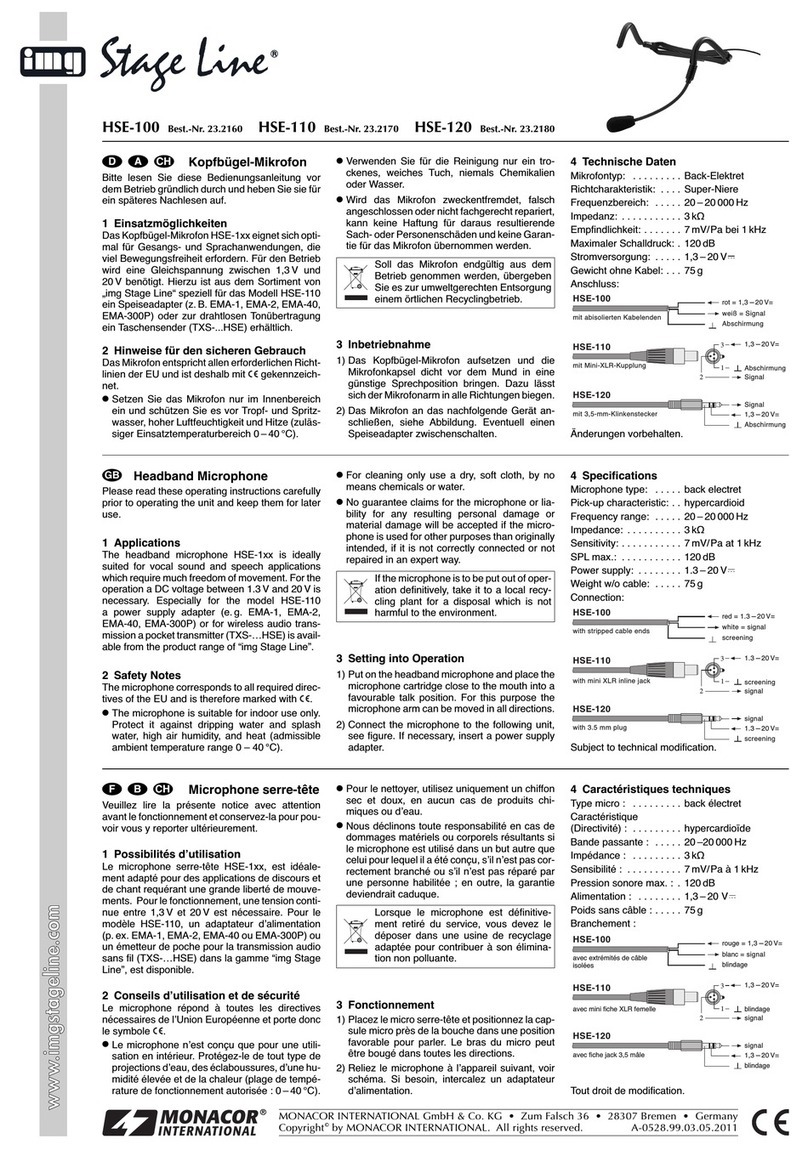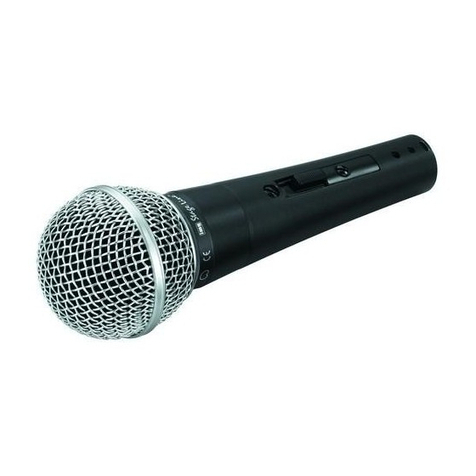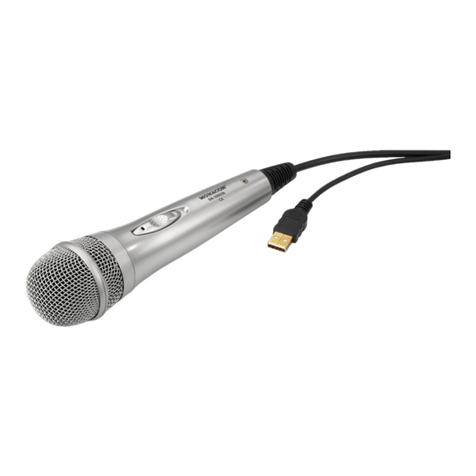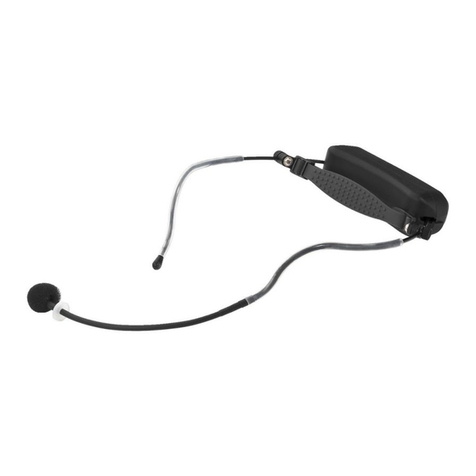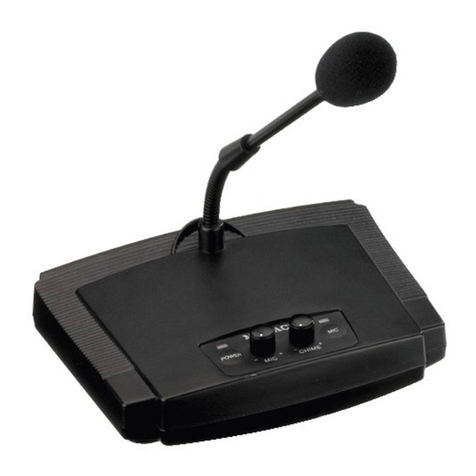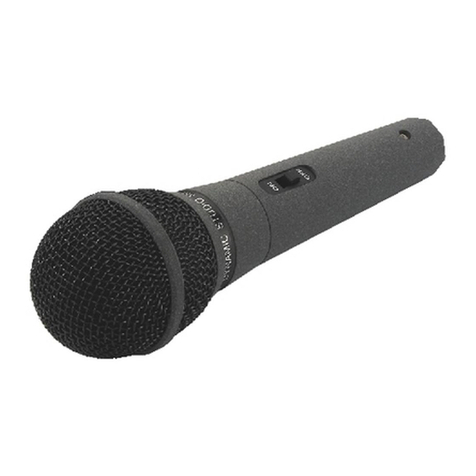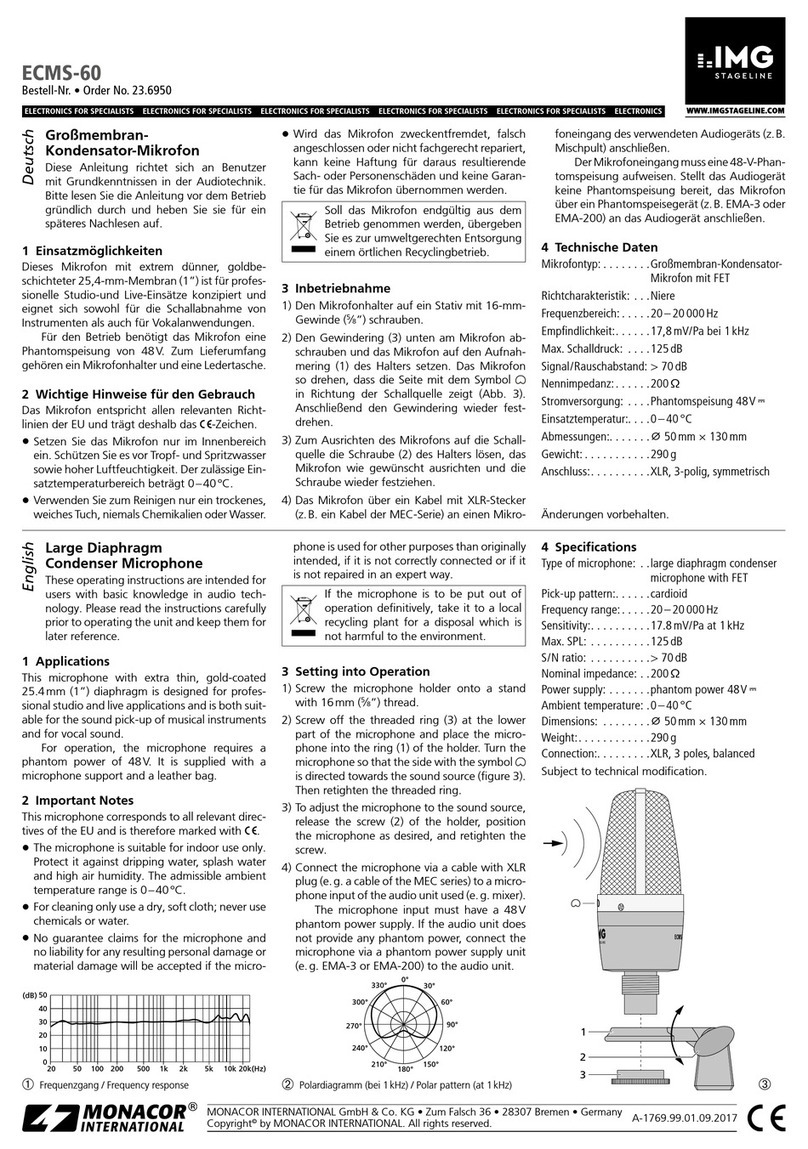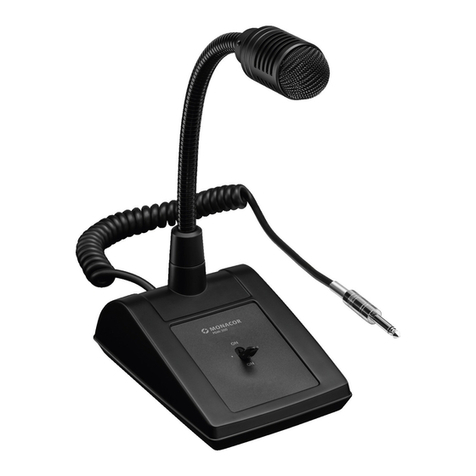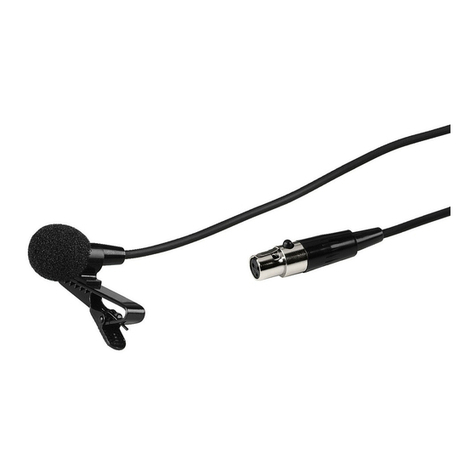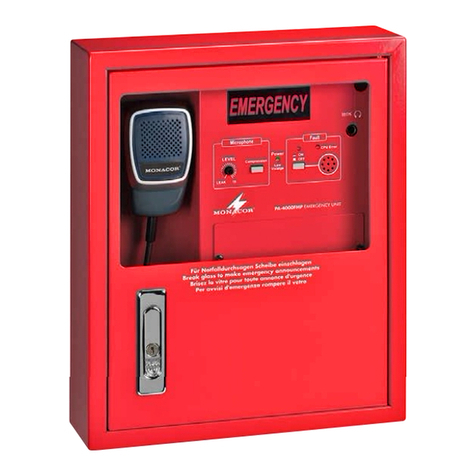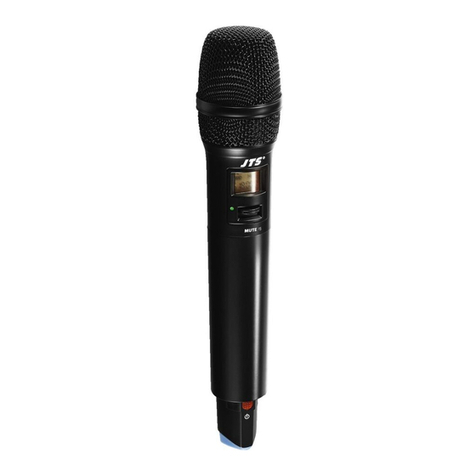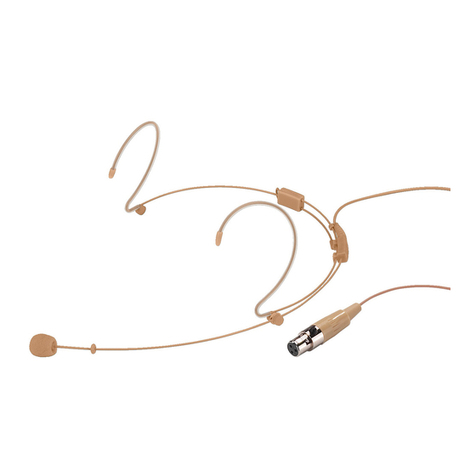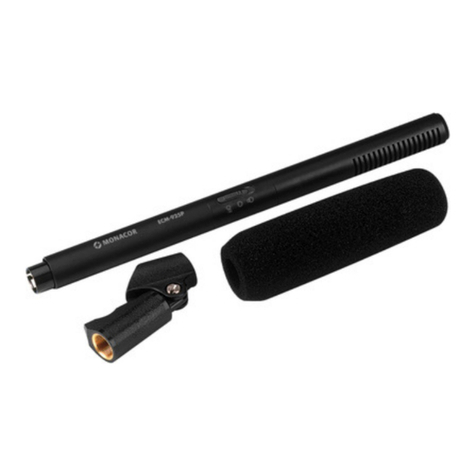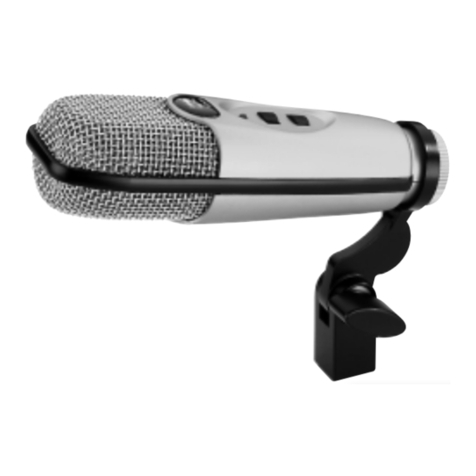Microfono dinamico per stru-
menti musicali
Vi preghiamo di leggere attentamente le presenti istruzioni
prima dell’uso e di conservarle per un uso futuro.
1 Possibilità d’impiego
Il microfono dinamico DM-44B è stato realizzato per
prelevare il suono dagli strumenti musicali a fre-
quenze molto basse, come p.es. bass-drum, stru-
menti gravi a fiato o chitarre basso. Un supporto per
il microfono si trova in dotazione.
2 Avvertenze di sicurezza
Il microfono è conforme a tutte le direttive richieste
dell’UE e pertanto porta la sigla .
●Usare il microfono solo all’interno di locali. Pro-
teggerlo dall’umidità e dal calore (temperatura
d’impiego ammessa fra 0 e 40°C).
●Per la pulizia usare solo un panno morbido,
asciutto; non impiegare in nessun caso prodotti
chimici o acqua.
●Nelcaso d’usoimproprio, dicollegamenti sbagliati
o di riparazione non a regola d’arte del microfono
non si assume nessuna responsabilità per even-
tuali danni consequenziali a persone o a cose e
non si assume nessuna garanzia per il microfono.
3 Messa in funzione
Spingere il microfono nel suo supporto. Avvitare il
supportosuuno stativo per microfonoconfilettatura
di 9mm (3/8"). Se lo stativo presenta una filettatura
Sesi desidera eliminareil microfonodefi-
nitivamente, consegnarlo per lo smalti-
mento ad un’istituzione locale per il
riciclaggio.
di 16mm (5/8") occorre togliere l’adattatore sul sup-
porto e avvitare il supporto direttamente.
Collegare il microfono con l’ingresso microfono
dell’apparecchio audio usato (p. es. del mixer) ser-
vendosi di un cavo con presa XLR (p.es. della serie
MEC di “img Stage Line”).
4 Dati tecnici
Caratteristica
direzionale: . . . . . . . . . cardioide
Gamma di frequenze: . . 40–16000 Hz
Sensibilità: . . . . . . . . . . 0,5mV/Pa con 1kHz
Impedenza: . . . . . . . . . 150Ω
Pressione max. sonora: 135dB
Dimensioni: . . . . . . . . . Ø 60mm x 115mm
Peso: . . . . . . . . . . . . . . 290g
Collegamento: . . . . . . . XLR, simmetrico
Con riserva di modifiche tecniche.
Micrófono dinámico para
instrumentos
Por favor, lea atentamente estas instrucciones antes de la uti-
lización y guárdelas para usos posteriores.
1 Usos
El micrófono dinámico DM-44B ha sido diseñado
para recoger el sonido de instrumentos musicales
de baja frecuencia, p.ej. tambores, instrumentos de
viento de baja frecuencia, o guitarra de bajos. Con
el micrófono se entrega un soporte de micrófono.
2 Notas para el uso seguro
El micrófono responde a todas las Directivas reque-
ridas por la UE y por ello está marcado con .
●El micrófono solo está indicado para un uso en
interior. Protéjalo de la humedad y del calor (tem-
peratura ambiente admisible: 0–40°C).
●Para limpiar use sólo un paño seco y suave, no
utilice productos químicos o agua.
●No se asumirá ninguna garantía para el micrófono
ni se aceptará responsabilidad alguna en caso de
daños personales o materiales producidos si el
micrófono se usa con fines distintos a aquel para
el que fue fabricado, si no está correctamente
conectado,osi noesreparado demaneraexperta.
3 Funcionamiento
Deslice el micrófono en el soporte. Atornille el
soporte a un pie de micrófono con rosca de 9mm
(3/8"). Si el pie está equipado con una rosca de
16mm (5/8"), saque el tornillo del adaptador del
soporte y enrosque directamente el soporte.
Si el micrófono es retirado del funcio-
namiento definitivamente, llévelo a un
centrode reciclajepara sueliminación no
contaminante para el medio ambiente.
Conecte el micrófono a través de un cable con
toma hembra XLR (por ejemplo un cable de la serie
MEC de “img Stage Line”) a la entrada del micró-
fono de la unidad audio utilizada (por ejemplo un
mezclador).
4 Características técnicas
Sistema: . . . . . . . . . . . cardioide
Banda pasante: . . . . . . 40–16000 Hz
Sensibilidad: . . . . . . . . 0,5mV/Pa a 1kHz
Impedancia: . . . . . . . . . 150Ω
Presión sonora máxima:135dB
Dimensiones: . . . . . . . . Ø 60mm x 115mm
Peso: . . . . . . . . . . . . . . 290g
Conexión: . . . . . . . . . . XLR, simétrica
Sujeto a modificaciones técnicas.
DM-44B
Best.-Nr. 23.4160
wwwwww..iimmggssttaaggeelliinnee..ccoomm
Copyright©by MONACOR INTERNATIONAL GmbH & Co. KG, Bremen, Germany. All rights reserved. A-0508.99.01.11.2005
®
Mikrofon dynamiczny do
instrumentów
Prosimy o uważne przeczytanie poniższej instrukcji przed użyciem
urządzenia, oraz o zachowanie tekstu do wglądu.
1Zastosowanie
Mikrofon dynamiczny DM-44B jest przeznaczony
do zbierania dźwięku z niskoczęstotliwościowych
instrument w muzycznych, np. perkusji basowej,
gitary basowej, czy instrument w dętych o małej
częstotliwości. W skład zestawu wchodzi uchwyt
montażowy.
2Bezpieczeństwo użytkowania
Ponieważ urządzenie spełnia wymogi norm obo-
wiązujących w Unii Europejskiej, jest oznaczone
symbolem .
●Urządzenie przeznaczone jest do użytku tylko
wewnątrz pomieszczeń. Należy chronić je przed
działaniem wilgoci oraz wysokiej temperatury
(dopuszczalna temperatura otoczenia pracy to
0–40°C).
●Do czyszczenia urządzenia należy używać
suchej, miękkiej tkaniny; nie wolno używać
wody, ani chemicznych środk w czyszczących.
●Nie ponosi się odpowiedzialności za wynikłe
uszkodzenia sprzętu lub obrażenia użytkownika
w przypadku, gdy urządzenie jest wykorzy-
stywane w innych celach niż to się przewiduje,
jeśli jest niewłaściwie zainstalowane, lub pod-
dane nieautoryzowanej naprawie.
3Przygotowanie do pracy
Należy umieścić mikrofon w uchwycie mon-
tażowym. Następnie należy przykręcić uchwyt do
statywu mikrofonowego z gwintem 9 mm (3/8").
Jeśli urządzenie ma zostać ostatecznie
wycofane z użycia, należy przekazać je
do punktu utylizacji odpad w, aby uni-
knąć zanieczyszczenia środowiska.
Jeśli na statywie jest zamontowany gwint 16 mm
(5/8"), należy zdjąć złączkę i przykręcić uchwyt
bezpośrednio do statywu.
Należy podłączyć mikrofon do wejścia mikrofo-
nowego urządzenia audio (np. miksera) za
pomocą kabla z gniazdem nakablowym XLR (np.
kabla z serii MEC z oferty “img Stage Line”)
4Dane techniczne
Charakterystyka: . . . . . kardioida
Pasmo przenoszenia: . 40 – 16000 Hz
Czułość: . . . . . . . . . . . . 0,5 mV/Pa/1 kHz
Op r: . . . . . . . . . . . . . . 150 Ω
Maks. SPL: . . . . . . . . . 135 dB
Wymiary: . . . . . . . . . . . Ø60 mm x 115 mm
Waga: . . . . . . . . . . . . . . 290 g
Połączenie: . . . . . . . . . XLR, sym.
Z zastrzeżeniem do możliwych zmian.
E
I
PL


